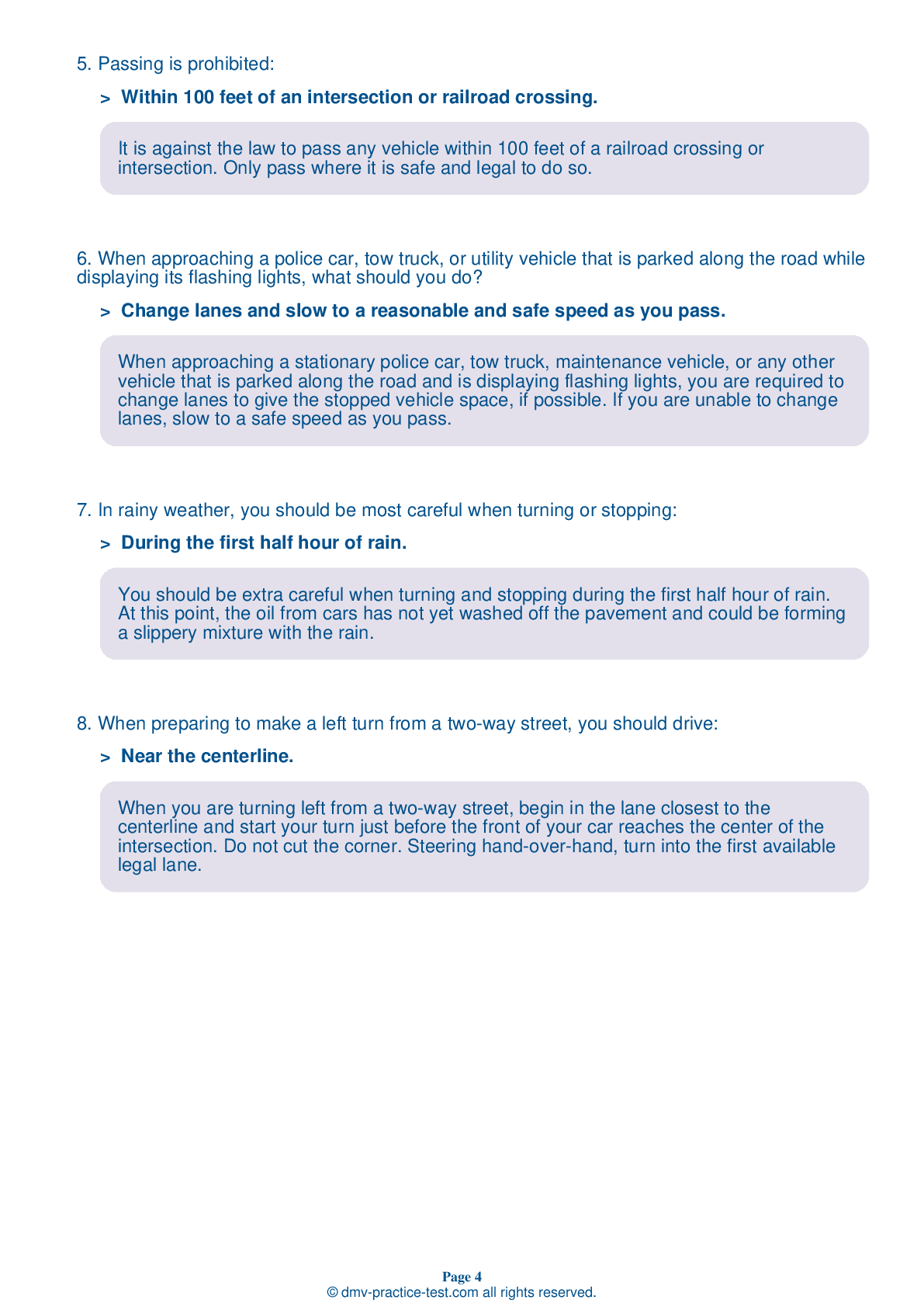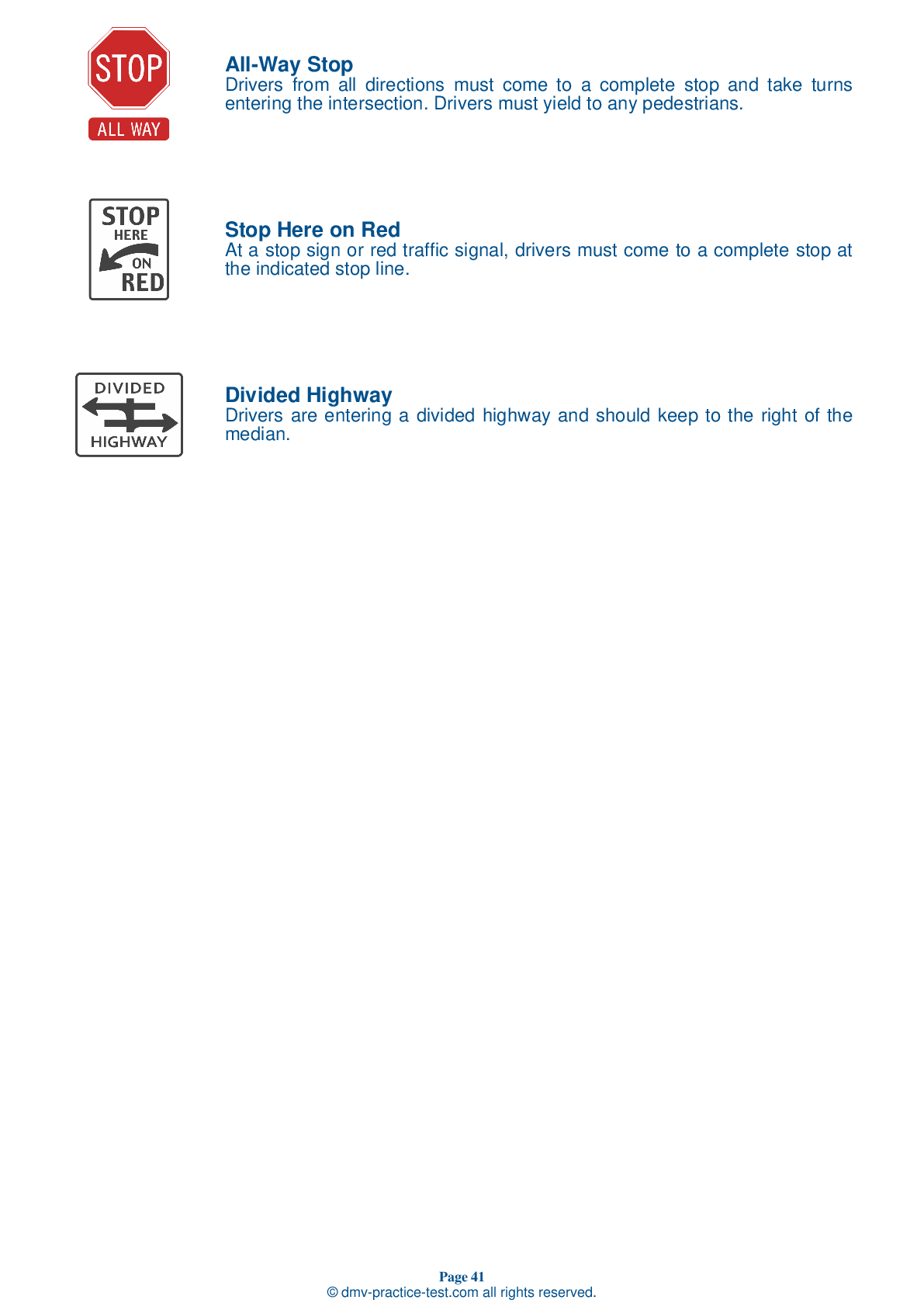FREE Iowa DMV Practice Test #5 Page 3 of 5
The DMV practise tests in Iowa have been updated for January 2025. It comprises questions based on the most important traffic signals and legislation for 2025 from the Iowa Driver Handbook. To study for the DMV driving permit test and driver's licence exam, use actual questions that are very similar (often identical!) to the DMV driving permit test and driver's licence exam.
Each question on the practise exam has a tip and explanation to help you recall the ideas. Questions about traffic rules, traffic signs, and driving statutes, as well as information from the Driver Handbook, will be included in the written portion of the official Iowa DMV test.
You must properly answer 28 of the 35 questions to receive a passing mark. To help you prepare for your Iowa instruction permit or driver's licence, take our DMV practise test.
The DMV exam is offered in a variety of languages.
Using any form of testing help will result in an automatic fail, and the DMV may take further action against your driver's licence, so avoid it.
17 . Signs that are colored orange are:
Highway work zones are established according to the type of work underway along the roadway. Signs in work areas are typically diamond-shaped, orange, have black letters or symbols, and serve as a warning that people are working on or near the highway.
18 . This sign means:

Warning signs prepare drivers for upcoming road conditions and hazards and are usually yellow and black. This sign tells drivers that a lane is ending and that they should prepare to allow traffic to merge safely.
19 . If you find that the roadway ahead of you is flooded, you should:
Never attempt to drive on a flooded road. Even if the water looks shallow, it may hide many kinds of hazards. If you encounter a flooded area, turn around and seek another route to your destination.
20 . Double solid yellow lines painted down the middle of the road mean:
Double solid yellow lines in the center of the road mean that passing is not allowed from either direction. You may not cross the lines unless you are making a left turn or passing pedestrians, bicyclists, and riders of scooters or skateboards when the opposite lane is clear and you can pass safely.
21 . When you hear the siren or see the flashing lights of an approaching emergency vehicle, you must:
Yield the right-of-way to any approaching emergency vehicle that is using its flashing lights or siren, regardless of its direction of travel. You must immediately drive to the right side of the road and stop until the emergency vehicle has passed. If you are within an intersection, pass through the intersection before coming to a stop on the right side of the road.
22 . Driving more slowly than surrounding traffic is:
Driving more slowly than other traffic can be dangerous. Drivers behind you may become impatient and will be tempted to take dangerous risks to pass you.
23 . When driving on the highway, consistently looking far ahead of your vehicle:
To avoid the need for last-minute braking or turning, consistently watch the road far ahead of your vehicle. By looking ahead and being ready to stop or change lanes if needed, you can drive more safely, save fuel, and help keep traffic moving at a steady pace.
24 . As a pedestrian, you should:
Pedestrians should not enter a street or crosswalk when vehicles are approaching. Though pedestrians have the right-of-way in crosswalks, a vehicle approaching from a close distance may not have the time to stop before entering the crosswalk.
Need Car Insurance? No problem!
Compare the best rates in Iowa and find a personalized policy that meets your needs.
1. Are You Currently insured ?
2. Married ?
3. Do you own your Home?
4. Do you have more than 1 car ?
5. Have you or a Family Member Honorably Served in U.S. Military ?
6. Your Name
7. Age
8. Zip code
IMPORTANT REMINDER:Auto Insurance is Mandatory to drive in Iowa. Get covered before you hit the road to avoid any fines.
Ranked by best match



